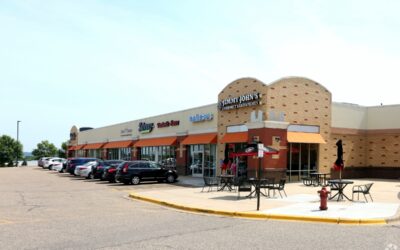Q4 2023 Market Outlook
by Matt Toczylowski
The fourth quarter of 2023 represented yet another impressive period for retail real estate, which continued to separate itself from other sectors of the commercial real estate landscape throughout the year. Contrary to the predictions of many pundits that the economy was in danger of grinding to a halt in 2023, continued job growth, historically low unemployment, and a steady increase in consumer spending despite higher borrowing costs led to an economic expansion that helped the retail real estate sector outperform.
Demand for retail space remained elevated in 2023 thanks to a growing economy and a strong labor market that kept customers shopping, with annual retail sales posting a 3.2% gain compared to the previous year. Conversely, the supply of new shopping centers remained at historically low levels, with just 27 million square feet of new retail space being delivered during the year – a record annual low, according to CBRE. These factors resulted in another year of positive net absorption and pushed the overall retail vacancy rate to 4.7% at year-end—the lowest rate in decades. A continuation of favorable market dynamics and the performance of retail real estate investments also attracted a herd of new investors to the sector in 2023; however, despite these new entrants to the market, transaction volume declined approximately 60% year over year due to higher debt costs and the persistent dislocation of bid-and-ask pricing between buyers and sellers.
On a national scale, an increased demand for retail space coupled with the limited supply of newly constructed retail space has resulted in positive net absorption and rental rate growth across the industry. Demand for retail space is expected to remain high in 2024 while the supply of new construction is projected to linger at historically low levels for the foreseeable future – a record low amount of retail space is currently under construction in the US, and new development remains stalled due to elevated construction financing costs coupled with record-high land and labor costs. Although we have seen modest increases to occupancy within the market, we have an optimistic view that market conditions will persist and translate into continued opportunities for positive absorption and rental rate growth in 2024.
Interest rate hikes stalled during the fourth quarter after a historic runup; however, rates settled at a level that continues to have a negative impact on transaction volume across the industry. Throughout most of 2023, sellers remained reluctant to adopt the market valuation set by buyers, whose pricing had been adjusted to account for a higher cost of debt. Additionally, the prospect of future interest rate reductions in 2024 further muddied the waters, with many “would-be sellers” electing to delay potential listings well into the new year in the hopes of achieving better pricing should rates eventually decline.
The continued stabilization of interest rates is expected to narrow the gap between sellers and buyers, leading to more sellers bringing their properties to market. Combine these factors with an above-average amount of commercial loans set to expire over the next 24 months—2024 is shaping up to be a generational buying opportunity in the commercial real estate market.
As we enter 2024, owner-operators and real estate investment managers should look forward to expanding on necessary investment initiatives required to fuel growth and seek additional capital with partners that have gained a renewed appreciation for the retail landscape and its inherent opportunities to build value and generate strong financial performance. Convenient, accessible, and essential Neighborhood Shopping Centers remain a staple within their respective markets and remain highly occupied, serving their communities with everyday goods and services.



